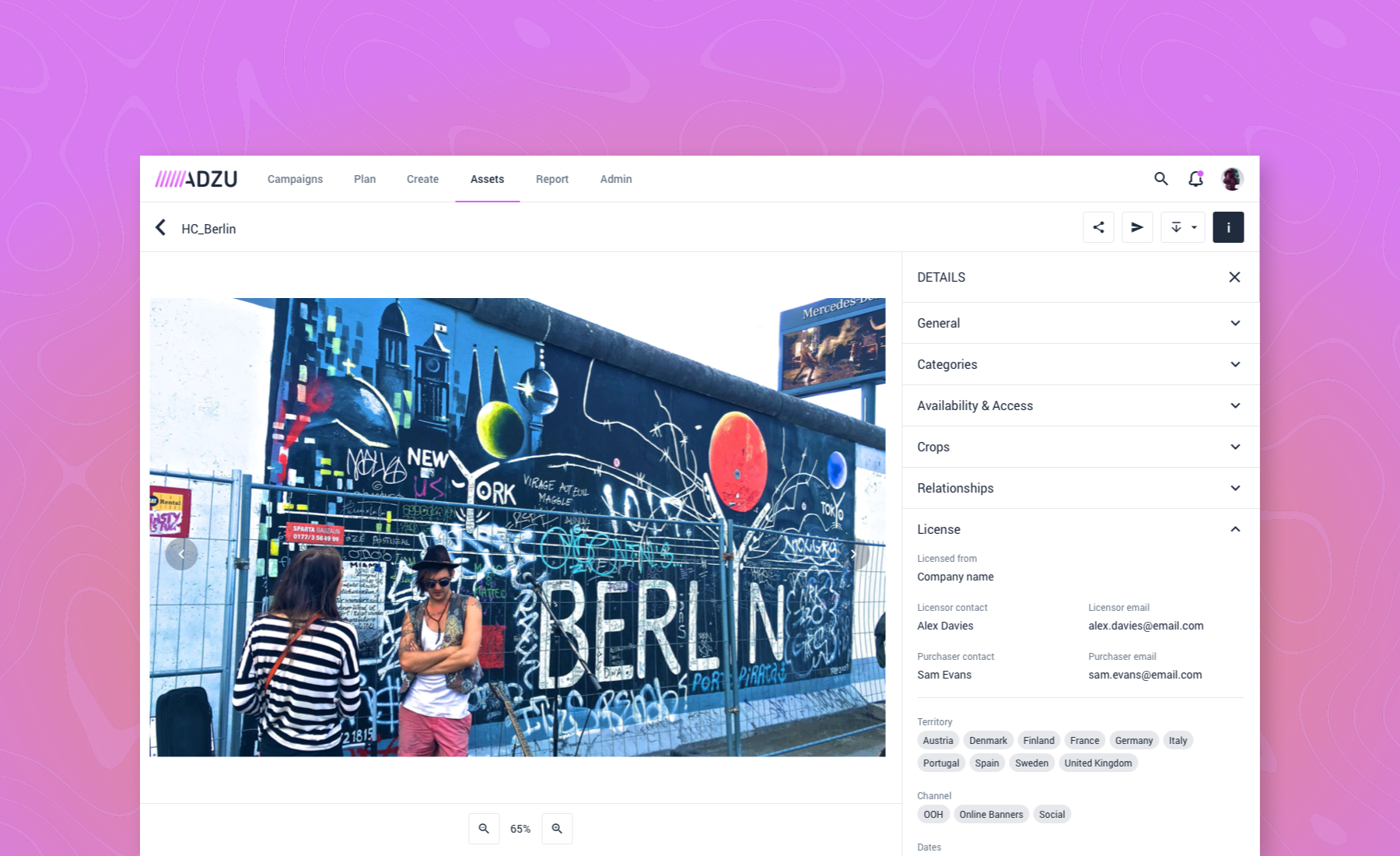adZU is a marketing automation platform enabling marketers to create campaigns at a global level. One of the services they offer is a Digital Asset Management (DAM) allowing companies to store, organise and share their digital files. My role working as the Product Designer was to own the end-to-end experience working alongside Product Managers when introducing new features and addressing existing issues.
The product was used by multiple global companies ranging from automotive brands to electrical products. Our insights came from a mixture of user interviews, feedback gathered by the Customer Success team, competitor research and our own initiatives and ideas. The core issues could be grouped into three categories; discovering assets, efficiency with dealing with large numbers of assets and managing access.
One of our main clients, an industry leader in electrical products, were heavy users of the DAM. Their main challenge was knowing how to find the correct asset. As they had over 2.5 million assets within the product, the users needed to know if the asset they have found is fit for their intended purpose. This can be a challenge as assets hold a lot of metadata against them.
We discovered with some clients, the users who would access the product would do so infrequently. In addition to this, staff turnover was high. Users were not all from the client's organisation and they would be used by agencies, retailers and other 3rd parties. When a new campaign was launched, a new set of users would be introduced to the platform and would need training. The demand for accessing the assets for a new campaign was all about speed.
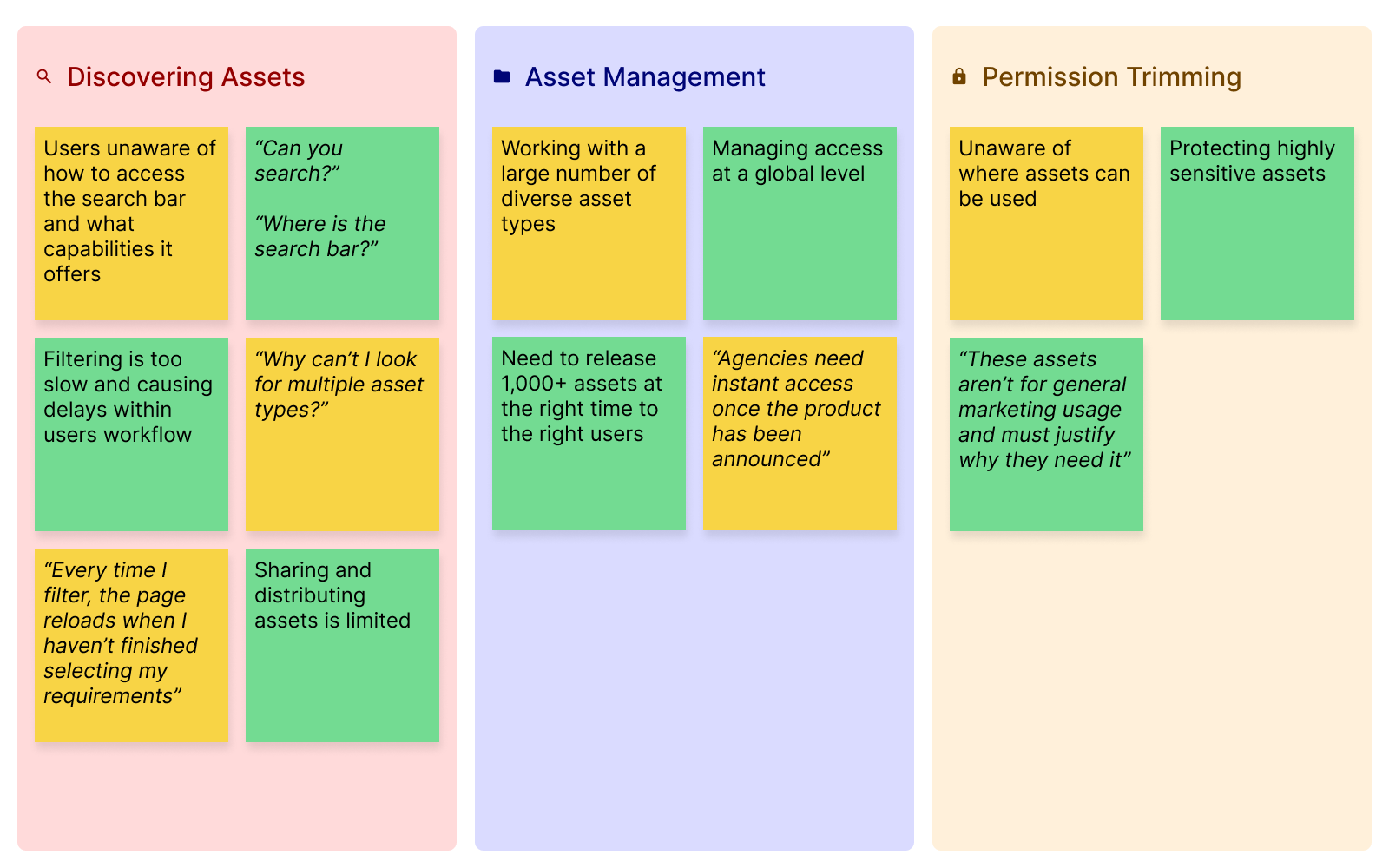
Knowing this, our goal was to make what can be overwhelming and complicated very simple and intuitive to use.
Working with the Product Managers, it was important we understood the goals from a business and users perspective ensuring each time we are delivering value to the user.
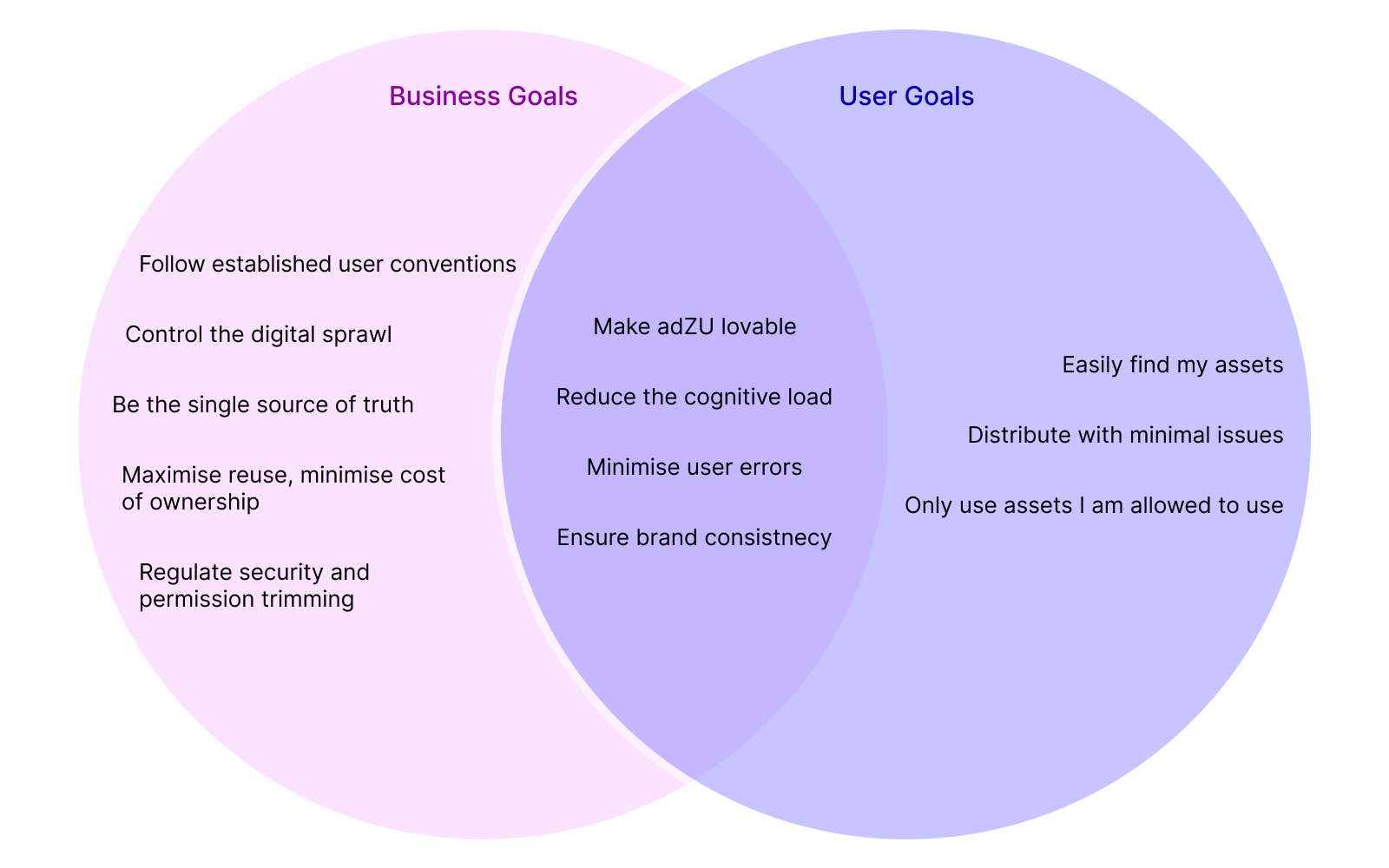
Displaying the assets
The Asset Gallery is one of the most important pages within the product. I led the redesign of the cards over numerous iterations including what content is displayed, how it is displayed and improving the selection of multiple assets.
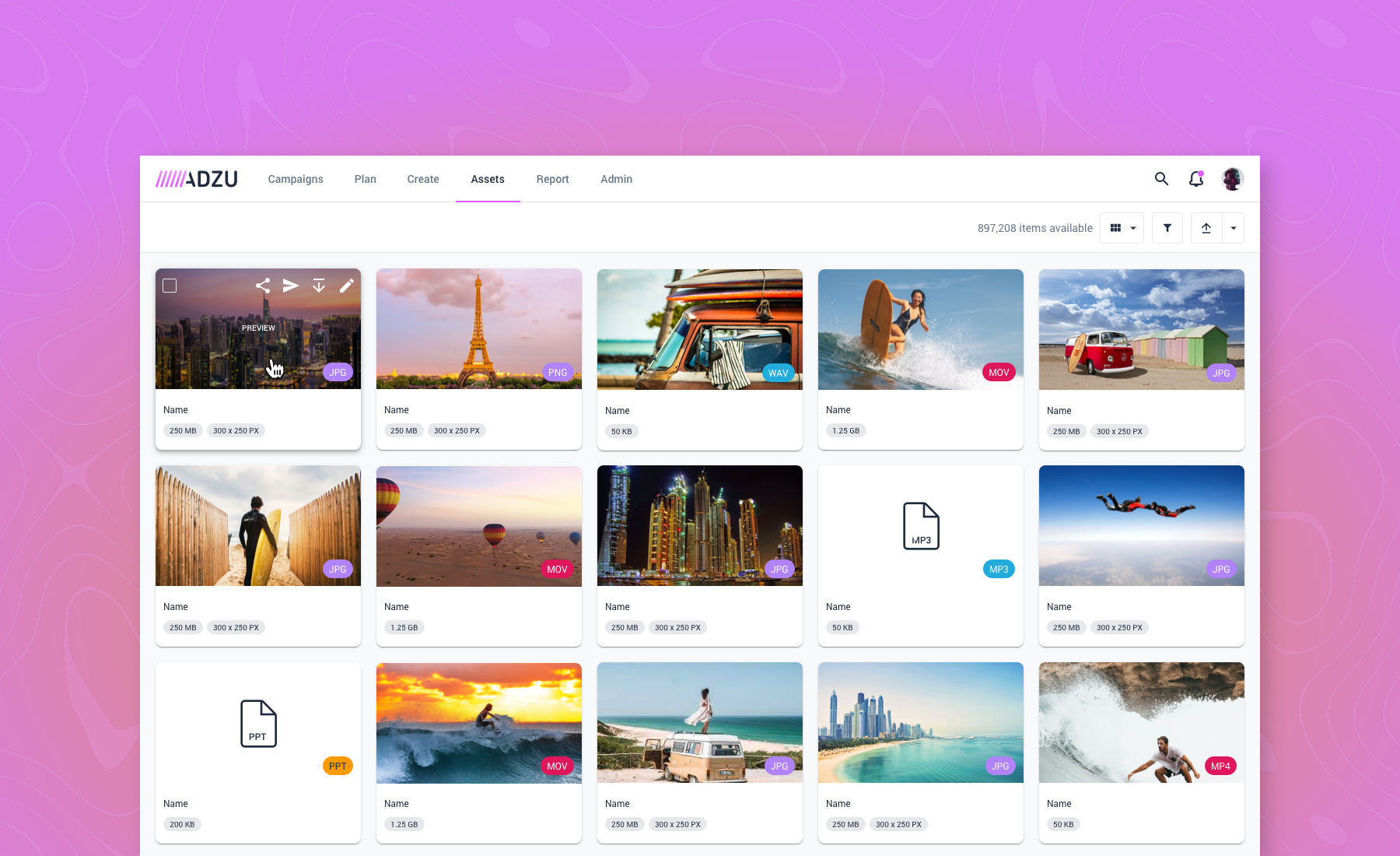
As cards can only display a limited amount of information. Users were able to view content within a table. Using new components we were able to increase the amount of metadata displayed ensuring users were able to discover content quickly.
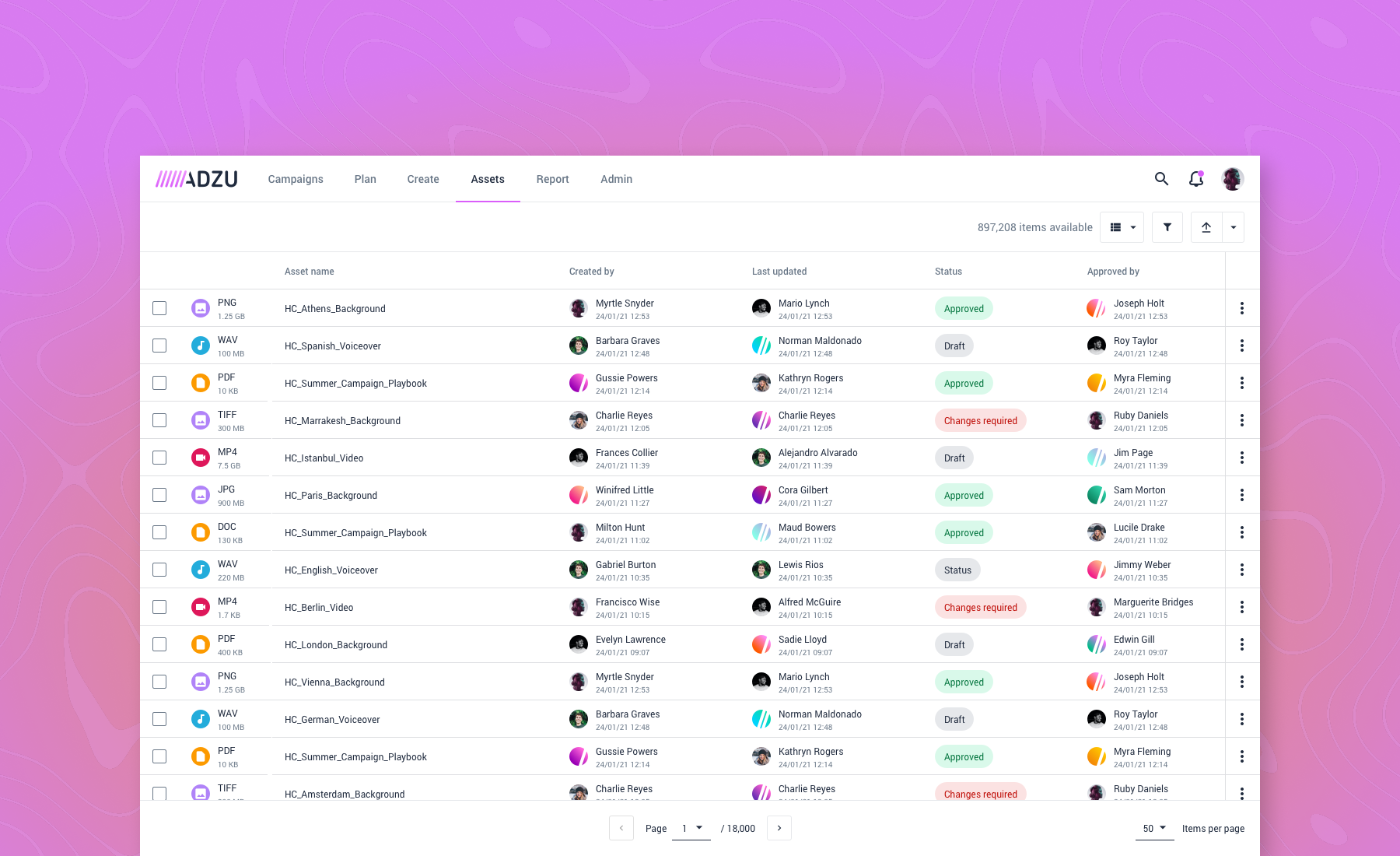
Finding assets
Finding assets proved to be difficult for users. They were unaware of the search bar, the filter was not clearly visible and filtering in general was difficult to do. An issue we had with the platform was not following a consistent framework. Having introduced this within a separate project, we were able to expose search, filter and sort as separate functionalities and maintain consistency across the platform. As the functionalities within the DAM grew, our options within the filter became overwhelming. We grouped these options into logical categories ensuring users could identify what they needed and reduce the time spent scrolling through the list. The filter was replaced with new components to improve performance, accessibility and visual appearance.
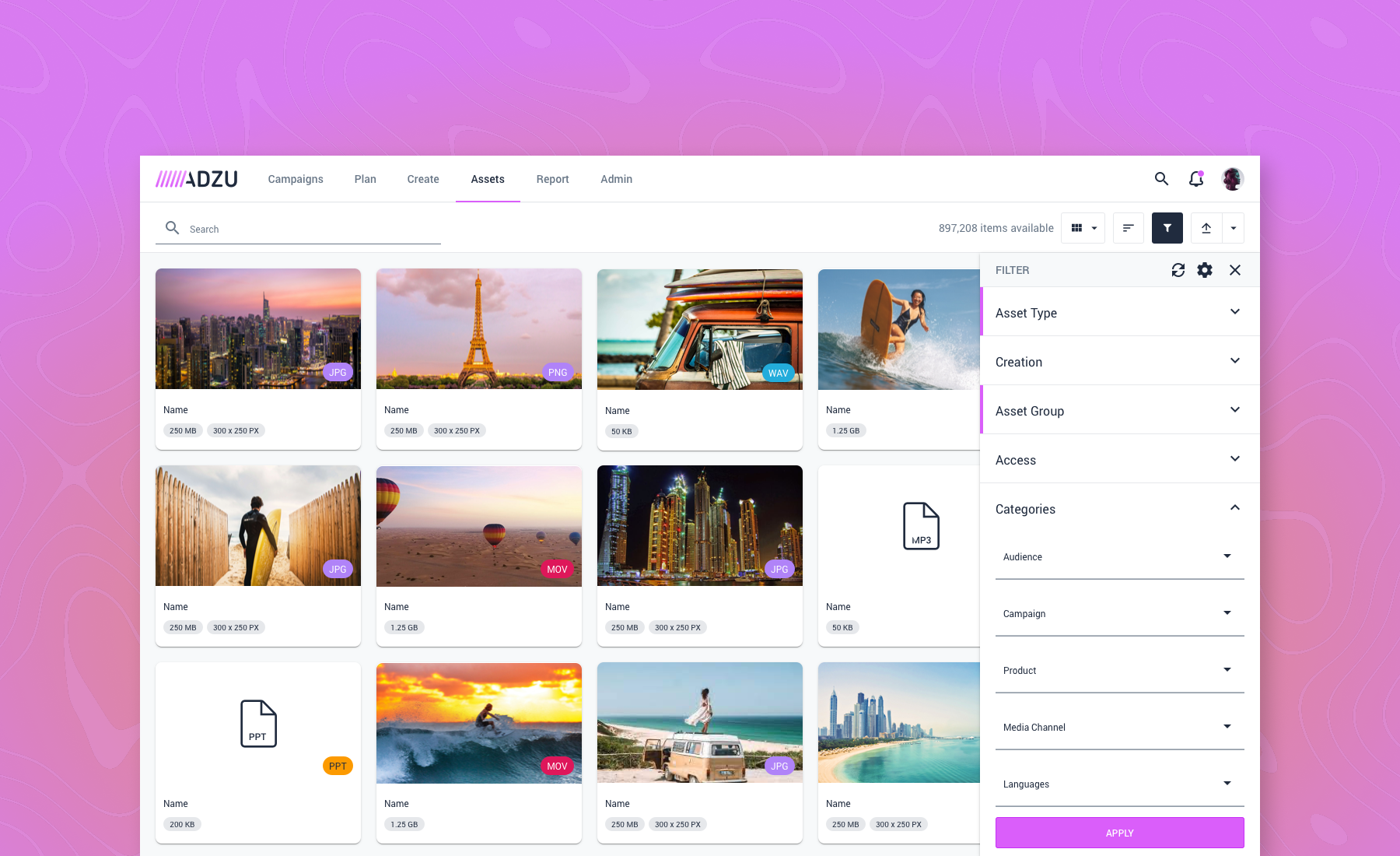
Sharing Assets
Sharing assets had limited functionality. The end user was able to see a list of assets and was only able to download them. If the user lost the link the assets would need to be reshared with them and you could not reshare that link with other users once the list of participants was defined. Over a number of iterations we enhanced the “share page” allowing users to have access to all links created by themselves or shared with them in one accessible location defining this as a new feature called “Workspaces”. This enables users to curate a personalised selection of assets which can be shared and maintained by multiple internal and external users depending on the rights assigned to them by the owner of the Workspace.
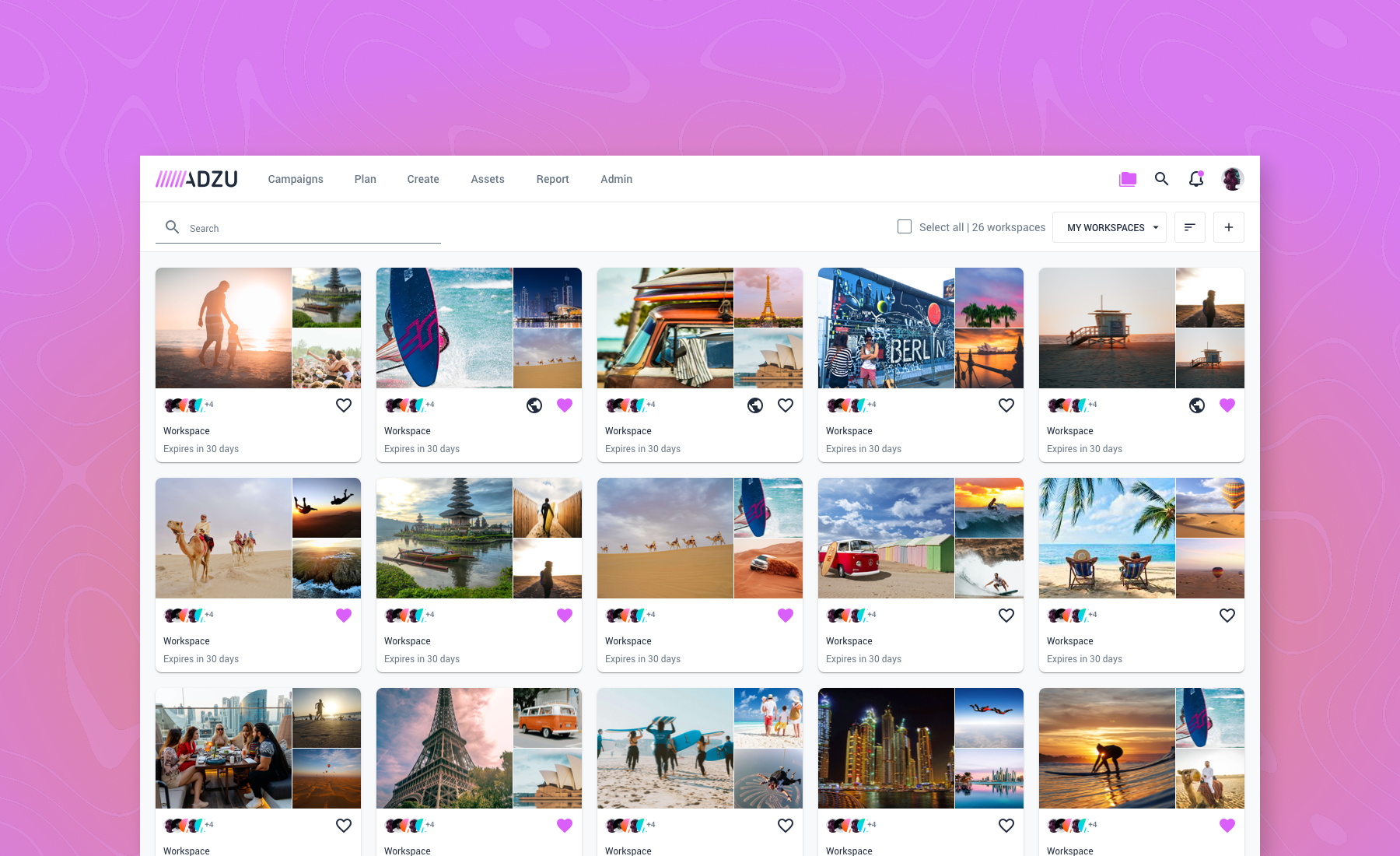
Enhancing security and Asset management
Managing permissions plays a crucial role in any DAM. This was important to our clients as they wanted to ensure assets were not visible to the wrong user and safeguard against highly sensitive assets being leaked before the launch of a new product. Improvements to licence data meant we could store more information about how an asset can be used within a campaign reducing the risk of errors. Other enhancements around licence data included how this information can be discovered by users. Another factor which can be overlooked is the lifecycle of an asset. We implemented the ability to create, link and track asset adaptations. This meant we could centralise the creation within one tool and reduce the time spent on managing and reporting on assets.
